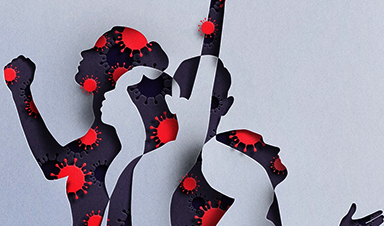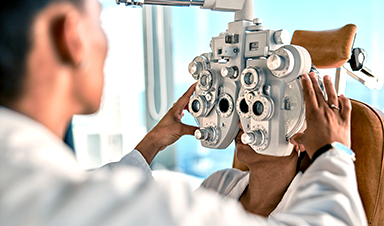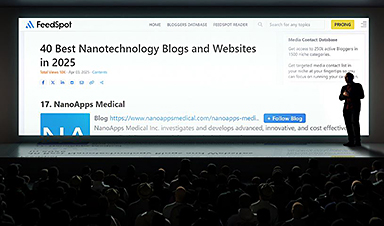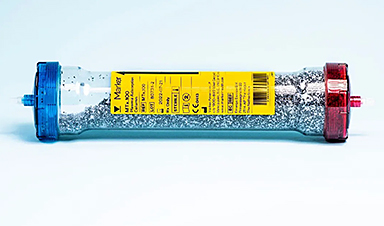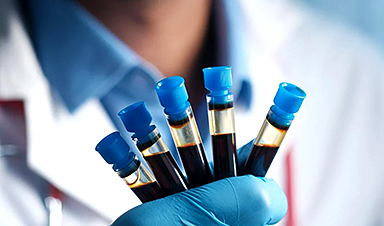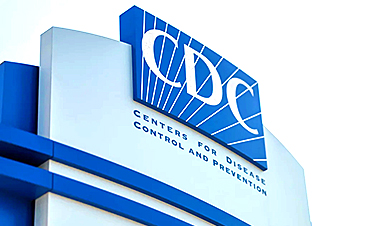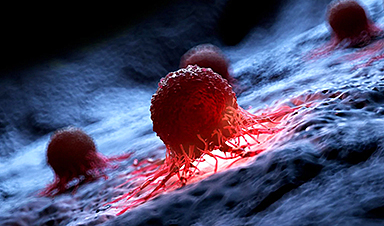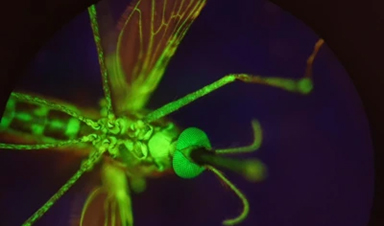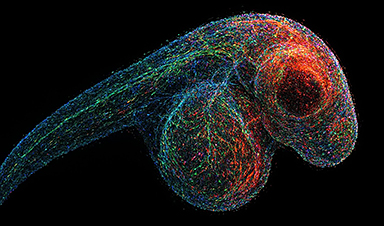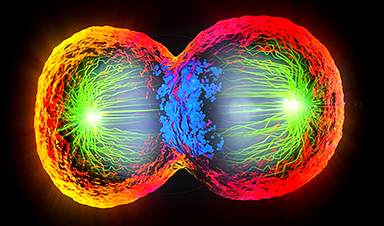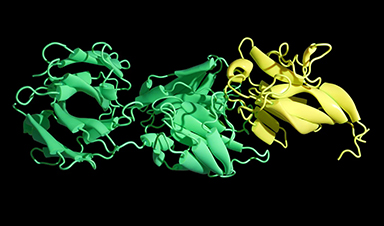One morning in March, 2020, Diana Berrent, a photographer and a mother of two from Long Island, woke up with a fever. She had chills, diarrhea, and a heaviness in her chest, and grew concerned. Her daughter was hosting a sleepover; Berrent made her way to the basement and asked the other girls to leave. Then she went into isolation for eighteen days.
Berrent had followed the news of the coronavirus from Wuhan to Lombardy and Tehran. But, she told me recently, “in suburbia, no one expects to be the first person on their block to get the plague.” She tried to get tested, but testing was limited mostly to people who’d been hospitalized. She eventually received a covid-19 diagnosis, after an acquaintance connected her to a local congressman who arranged a test. On Facebook, she conducted her own contact tracing. A few days before falling ill, she had photographed an event in a crowded elementary-school gymnasium, and she was convinced that she was Patient Zero. At the time, there were scattered reports of coronavirus cases, but few people admitted to being infected, and her social-media updates went viral. The New York Post gave Berrent a daily column in which to chronicle her illness. She started a video blog detailing her symptoms, isolation, and recovery. In one HGTV-inspired episode, she instructed viewers on “how to set up your perfect isolation room.”
Berrent started a Facebook group called Survivor Corps, as a sort of “Tinder for plasma,” she said. Within a week, the group had more than ten thousand followers. On its page, Berrent wrote that people infected by the coronavirus were “waiting to be superheroes.” Later, when monoclonal antibodies were shown to be effective at fighting covid-19, she began working with the pharmaceutical company Regeneron and the health-care firm Optum to help people arrange home delivery of the treatment.
Survivor Corps now has more than a hundred and seventy-five thousand members—it is the largest grassroots covid movement in the world. These days, Berrent meets regularly with government officials, leading scientists, patient-advocacy groups, and covid survivors and their families. Not long ago, she gave presentations to the Centers for Disease Control and Prevention, the National Institutes of Health, and a White House coronavirus task force within the same week. She appears on podcasts and panels, and sits on a number of covid committees at universities and within government, sometimes as the only patient advocate. “I’m now being asked to peer-review medical papers, and I haven’t taken biology since tenth grade,” she said.
Survivor Corps has no physical headquarters. It is, in essence, a huge Facebook group with an associated Web site. People share stories of lost parents and children; they ask for prayers and support; they vent about an unfeeling health-care system. They describe debilitating symptoms that they attribute to long covid: problems with their livers, legs, lungs, stomachs, skin, teeth, memories, and moods. They speculate about biological theories and swap medical advice, some of it valid, but some unsupported or proved ineffective. (The group, which is lightly moderated, has rules against “unsubstantiated” medical advice and conspiracy theories.) Occasionally, someone voices skepticism about what people are posting. “I am astonished at what a very close friend just said to me,” one member posted. The friend had accused her of reading “what a bunch of people write” but having “no idea if they’re telling the truth. They just tell you what you want to hear so you can blame all your issues on being sick 9 months ago.”
Advocating for such a vast constituency has pulled Berrent into choppy scientific waters. Historically, patient advocates have often found themselves opposing the researchers with whom they are trying to partner; aids activists frequently clashed with scientists, demanding faster research and more treatments, and in May, 1990, hundreds of act up members protested outside the National Institute of Allergy and Infectious Diseases, which Anthony Fauci had been leading for half a decade. More recently, advocates have worked on behalf of people who say they suffer from chronic-fatigue syndrome, fibromyalgia, chronic Lyme disease, and other conditions that some researchers consider ill-defined.
There is little doubt among researchers that long covid exists. But the syndrome is new, and lives for the moment in the realm of theory and anecdote….
News
AI Outperforms Physicians in Real-World Urgent Care Decisions, Study Finds
The study, conducted at the virtual urgent care clinic Cedars-Sinai Connect in LA, compared recommendations given in about 500 visits of adult patients with relatively common symptoms – respiratory, urinary, eye, vaginal and dental. [...]
Challenging the Big Bang: A Multi-Singularity Origin for the Universe
In a study published in the journal Classical and Quantum Gravity, Dr. Richard Lieu, a physics professor at The University of Alabama in Huntsville (UAH), which is a part of The University of Alabama System, suggests that [...]
New drug restores vision by regenerating retinal nerves
Vision is one of the most crucial human senses, yet over 300 million people worldwide are at risk of vision loss due to various retinal diseases. While recent advancements in retinal disease treatments have [...]
Shingles vaccine cuts dementia risk by 20%, new study shows
A shingles shot may do more than prevent rash — it could help shield the aging brain from dementia, according to a landmark study using real-world data from the UK. A routine vaccine could [...]
AI Predicts Sudden Cardiac Arrest Days Before It Strikes
AI can now predict deadly heart arrhythmias up to two weeks in advance, potentially transforming cardiac care. Artificial intelligence could play a key role in preventing many cases of sudden cardiac death, according to [...]
NanoApps Medical is a Top 20 Feedspot Nanotech Blog
There is an ocean of Nanotechnology news published every day. Feedspot saves us a lot of time and we recommend it. We have been using it since 2018. Feedspot is a freemium online RSS [...]
This Startup Says It Can Clean Your Blood of Microplastics
This is a non-exhaustive list of places microplastics have been found: Mount Everest, the Mariana Trench, Antarctic snow, clouds, plankton, turtles, whales, cattle, birds, tap water, beer, salt, human placentas, semen, breast milk, feces, testicles, [...]
New Blood Test Detects Alzheimer’s and Tracks Its Progression With 92% Accuracy
The new test could help identify which patients are most likely to benefit from new Alzheimer’s drugs. A newly developed blood test for Alzheimer’s disease not only helps confirm the presence of the condition but also [...]
The CDC buried a measles forecast that stressed the need for vaccinations
This story was originally published on ProPublica, a nonprofit newsroom that investigates abuses of power. Sign up to receive our biggest stories as soon as they’re published. ProPublica — Leaders at the Centers for Disease Control and Prevention [...]
Light-Driven Plasmonic Microrobots for Nanoparticle Manipulation
A recent study published in Nature Communications presents a new microrobotic platform designed to improve the precision and versatility of nanoparticle manipulation using light. Led by Jin Qin and colleagues, the research addresses limitations in traditional [...]
Cancer’s “Master Switch” Blocked for Good in Landmark Study
Researchers discovered peptides that permanently block a key cancer protein once thought untreatable, using a new screening method to test their effectiveness inside cells. For the first time, scientists have identified promising drug candidates [...]
AI self-cloning claims: A new frontier or a looming threat?
Chinese scientists claim that some AI models can replicate themselves and protect against shutdown. Has artificial intelligence crossed the so-called red line? Chinese researchers have published two reports on arXiv claiming that some artificial [...]
New Drug Turns Human Blood Into Mosquito-Killing Weapon
Nitisinone, a drug for rare diseases, kills mosquitoes when present in human blood and may become a new tool to fight malaria, offering longer-lasting, environmentally safer effects than ivermectin. Controlling mosquito populations is a [...]
DNA Microscopy Creates 3D Maps of Life From the Inside Out
What if you could take a picture of every gene inside a living organism—not with light, but with DNA itself? Scientists at the University of Chicago have pioneered a revolutionary imaging technique called volumetric DNA microscopy. It builds [...]
Scientists Just Captured the Stunning Process That Shapes Chromosomes
Scientists at EMBL have captured how human chromosomes fold into their signature rod shape during cell division, using a groundbreaking method called LoopTrace. By observing overlapping DNA loops forming in high resolution, they revealed that large [...]
Bird Flu Virus Is Mutating Fast – Scientists Say Our Vaccines May Not Be Enough
H5N1 influenza is evolving rapidly, weakening the effectiveness of existing antibodies and increasing its potential threat to humans. Scientists at UNC Charlotte and MIT used high-performance computational modeling to analyze thousands of viral protein-antibody interactions, revealing [...]
